Potential Energy Worksheets
If you're searching for practical and informative worksheets to reinforce your understanding of potential energy, you've come to the right place. These worksheets are carefully designed to help both students and teachers delve into the concept of potential energy and tackle related problems with confidence.
Table of Images 👆
- Potential and Kinetic Energy Worksheets
- Potential and Kinetic Energy Worksheet Key
- Potential Energy Diagram Worksheet Answers
- Potential and Kinetic Energy Worksheet Answers
- Kinetic Energy Worksheet
- Potential Kinetic Energy Worksheet Answer Key
- Potential Kinetic Energy Worksheet
- Potential and Kinetic Energy Worksheet with Answers
- Elastic Potential Energy Worksheet
- Potential and Kinetic Energy Worksheets Middle School
- Potential and Kinetic Energy Problems
More Energy Worksheets
Light and Heat Energy WorksheetsTypes of Energy Transfer Worksheet
Energy Light Heat Sound Worksheets
3 Forms of Energy Worksheets
Energy Worksheets for Third Grade
What is potential energy?
Potential energy is the stored energy an object possesses due to its position, shape, or state. This energy can be released and converted into other forms of energy such as kinetic energy when the object's position or condition changes. The amount of potential energy an object has is determined by factors such as its mass, height, and the force acting upon it.
How is potential energy different from kinetic energy?
Potential energy is the energy an object possesses due to its position or state, such as gravitational potential energy or elastic potential energy, whereas kinetic energy is the energy an object possesses due to its motion. So, potential energy is based on the object's position or state, while kinetic energy is based on the object's movement.
What are some everyday examples of potential energy?
Some everyday examples of potential energy include a stretched rubber band ready to release its energy when let go, a book sitting on a bookshelf waiting to fall due to gravity, a compressed spring in a pen that can be released to write, and water at the top of a waterfall that has the potential to produce hydroelectric power when it falls.
How is gravitational potential energy calculated?
Gravitational potential energy (GPE) is calculated using the formula: GPE = mgh, where "m" is the mass of the object in kilograms, "g" is the acceleration due to gravity in meters per second squared, and "h" is the height above a reference point in meters. By multiplying the mass, acceleration due to gravity, and height, you can determine the gravitational potential energy of an object at a certain height above the ground.
How does elastic potential energy work?
Elastic potential energy refers to the energy stored in an object when it is stretched or compressed. It is a form of potential energy that arises from the deformation of an elastic material, such as a spring or a rubber band. When the object is stretched or compressed, work is done on it, storing potential energy within the object. This potential energy can be converted back into kinetic energy when the object returns to its original shape or position. The amount of elastic potential energy stored in an object depends on the material properties, such as elasticity and stiffness, as well as the amount of deformation applied to the object.
What is chemical potential energy?
Chemical potential energy is the energy stored in the bonds between atoms and molecules in a substance. It is a form of potential energy that can be released during a chemical reaction when bonds are broken or formed. This energy is related to the arrangement of atoms in a molecule and is a key factor in determining how substances interact and transform in chemical reactions.
How does gravitational potential energy change with height?
Gravitational potential energy increases with height. As an object is lifted to a higher position against the force of gravity, its gravitational potential energy also increases. This is because the higher the object is lifted, the more work is done to overcome gravity, storing more energy in the object due to its changed position in the gravitational field. Conversely, as the object is lowered, its gravitational potential energy decreases because work is done by gravity as the object moves to a lower position.
How does the mass of an object affect its potential energy?
The potential energy of an object is directly proportional to its mass. This means that the greater the mass of an object, the higher its potential energy will be. This relationship is important to understand in the context of gravitational potential energy, where an object's mass plays a key role in determining the potential energy stored in the object due to its position in a gravitational field.
What is the relationship between potential energy and work done?
Potential energy is the energy stored in an object based on its position or configuration. When work is done on an object, such as lifting it against gravity, the potential energy of the object increases. This relationship is described by the work-energy theorem, which states that the work done on an object is equal to the change in its kinetic and potential energy. In other words, the work done on an object increases its potential energy.
How can potential energy be converted into other forms of energy?
Potential energy can be converted into other forms of energy through various mechanisms such as gravitational forces, elasticity, and chemical reactions. For example, when an object is lifted to a height, it gains gravitational potential energy which can be converted into kinetic energy when it falls. Similarly, stretching a spring stores elastic potential energy that can be released as kinetic energy when the spring recoils. Additionally, potential energy stored in chemical bonds can be converted into thermal or electrical energy through processes like combustion or battery discharging.
Have something to share?
Who is Worksheeto?
At Worksheeto, we are committed to delivering an extensive and varied portfolio of superior quality worksheets, designed to address the educational demands of students, educators, and parents.

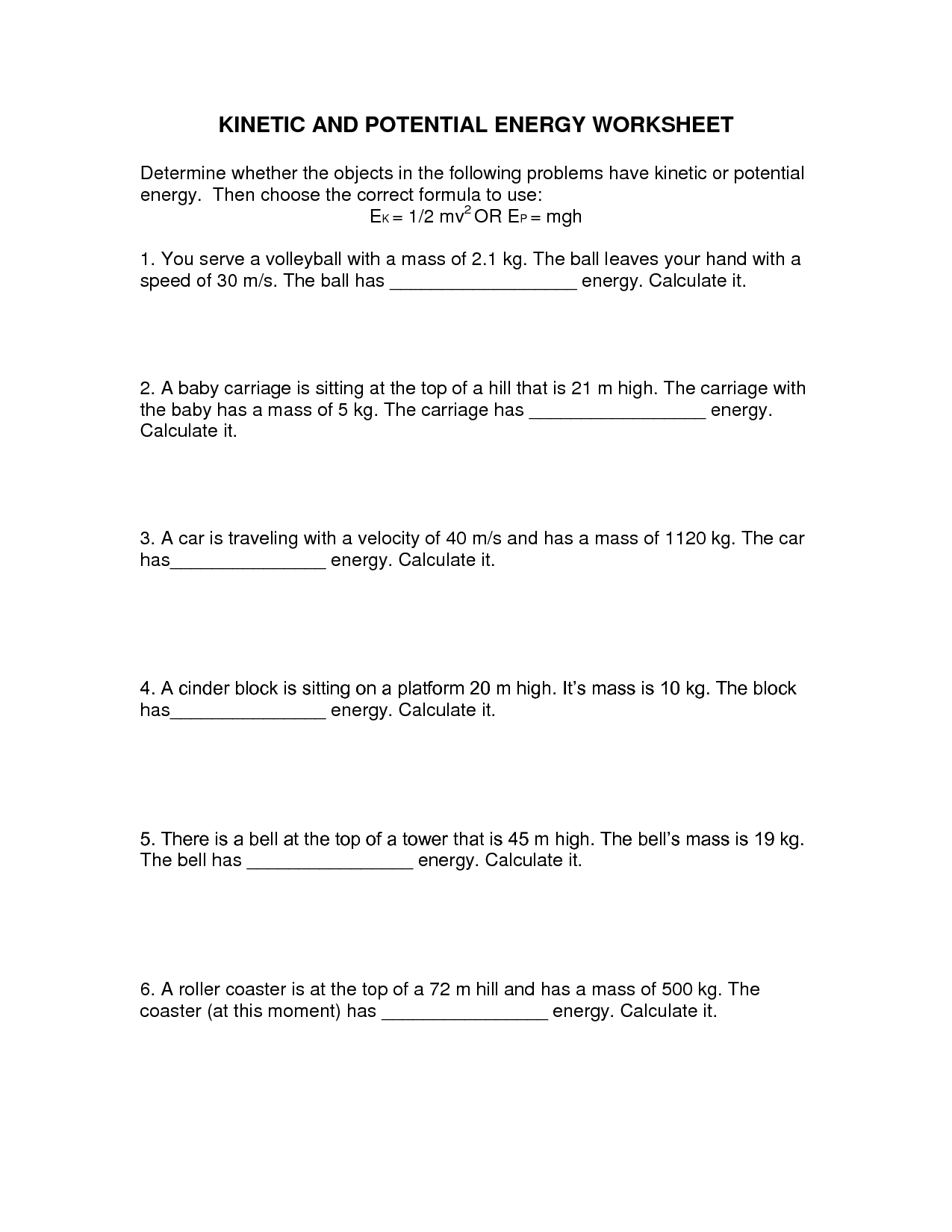



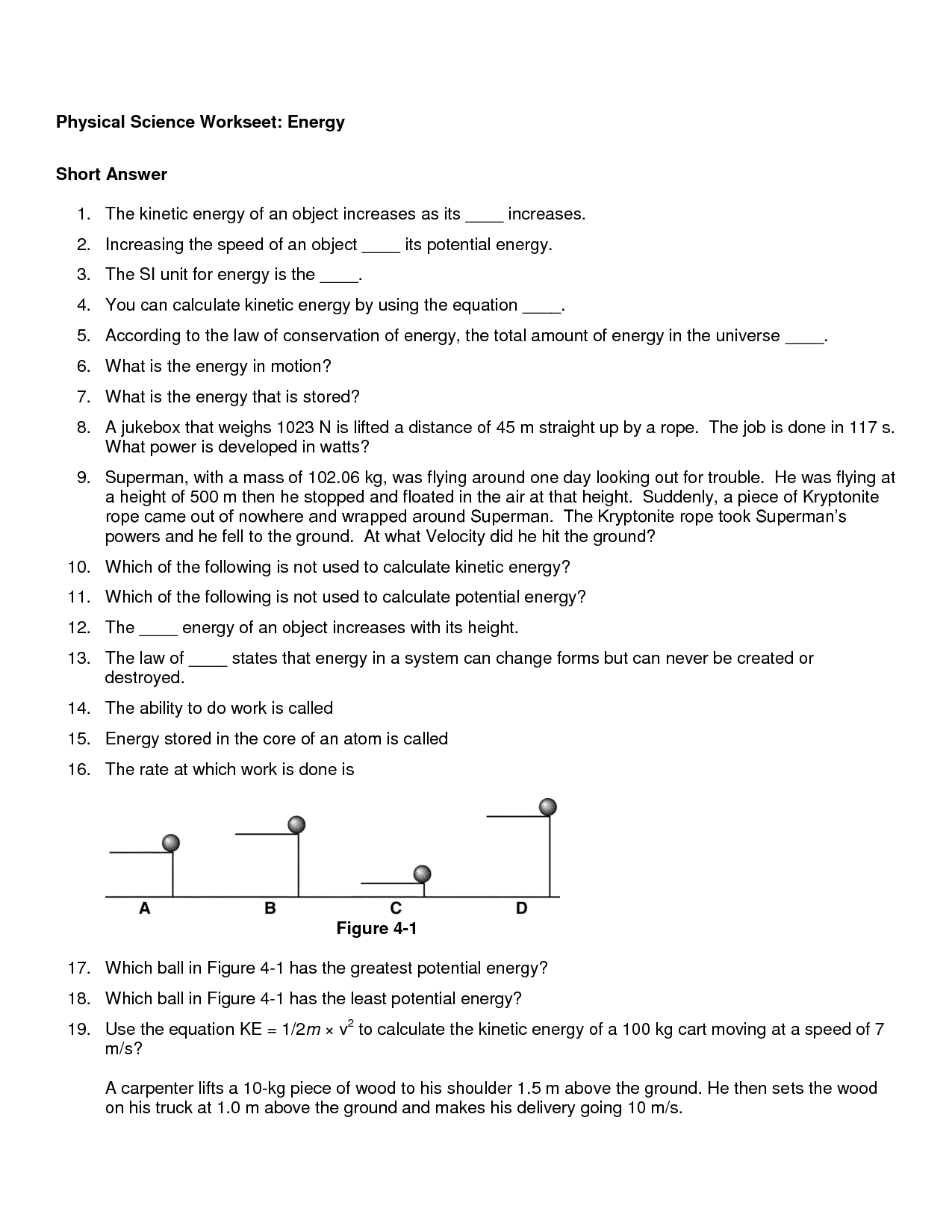
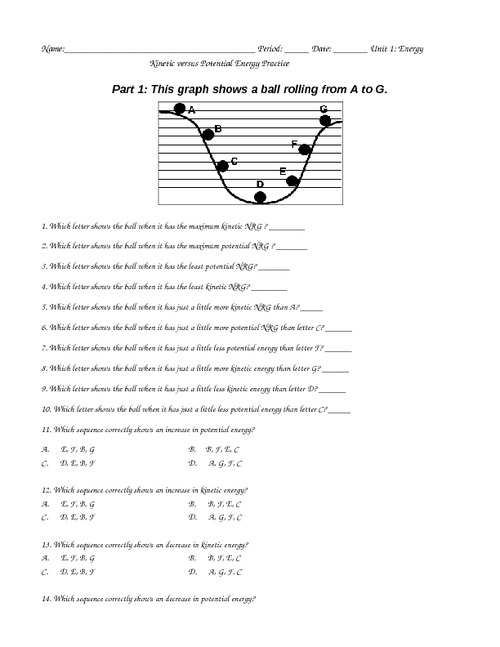
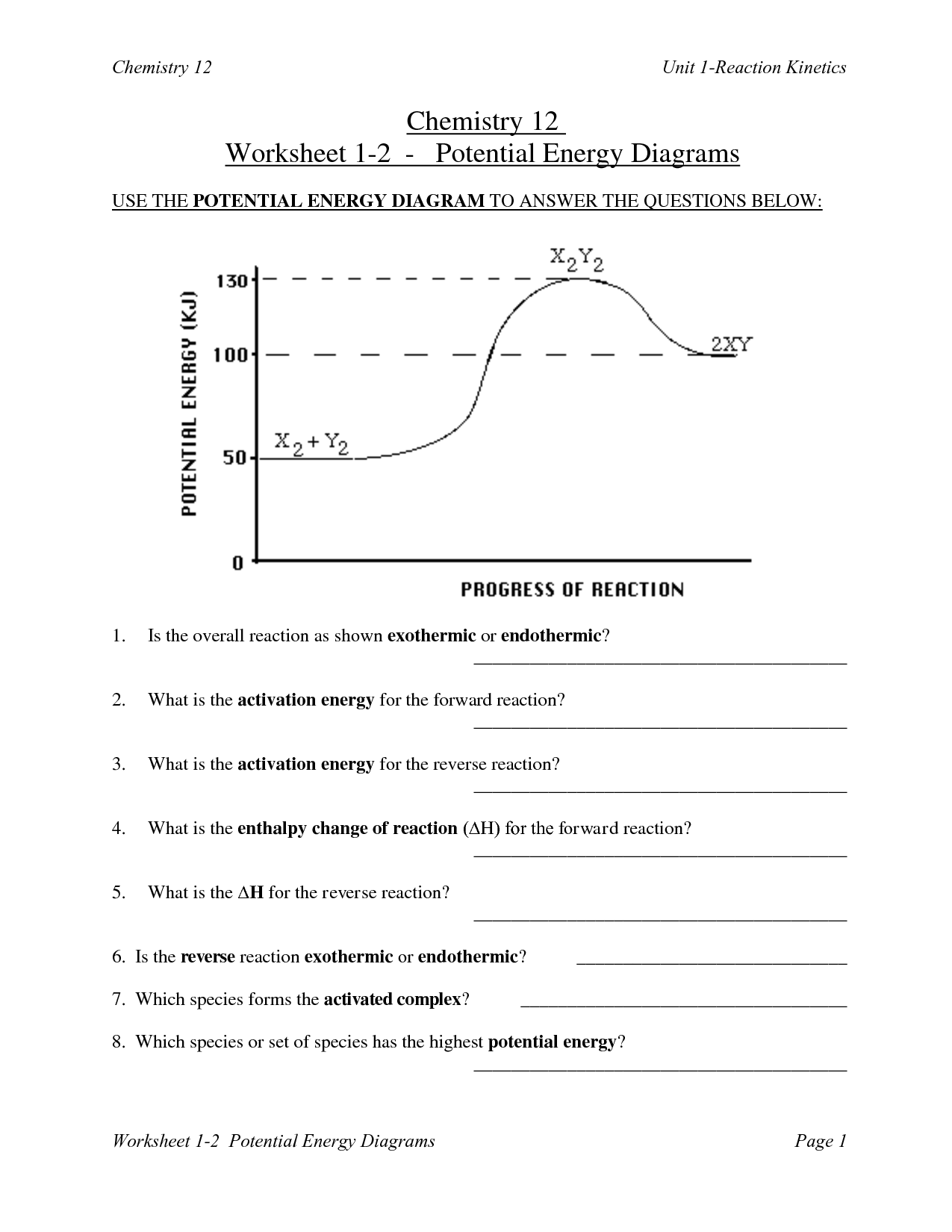
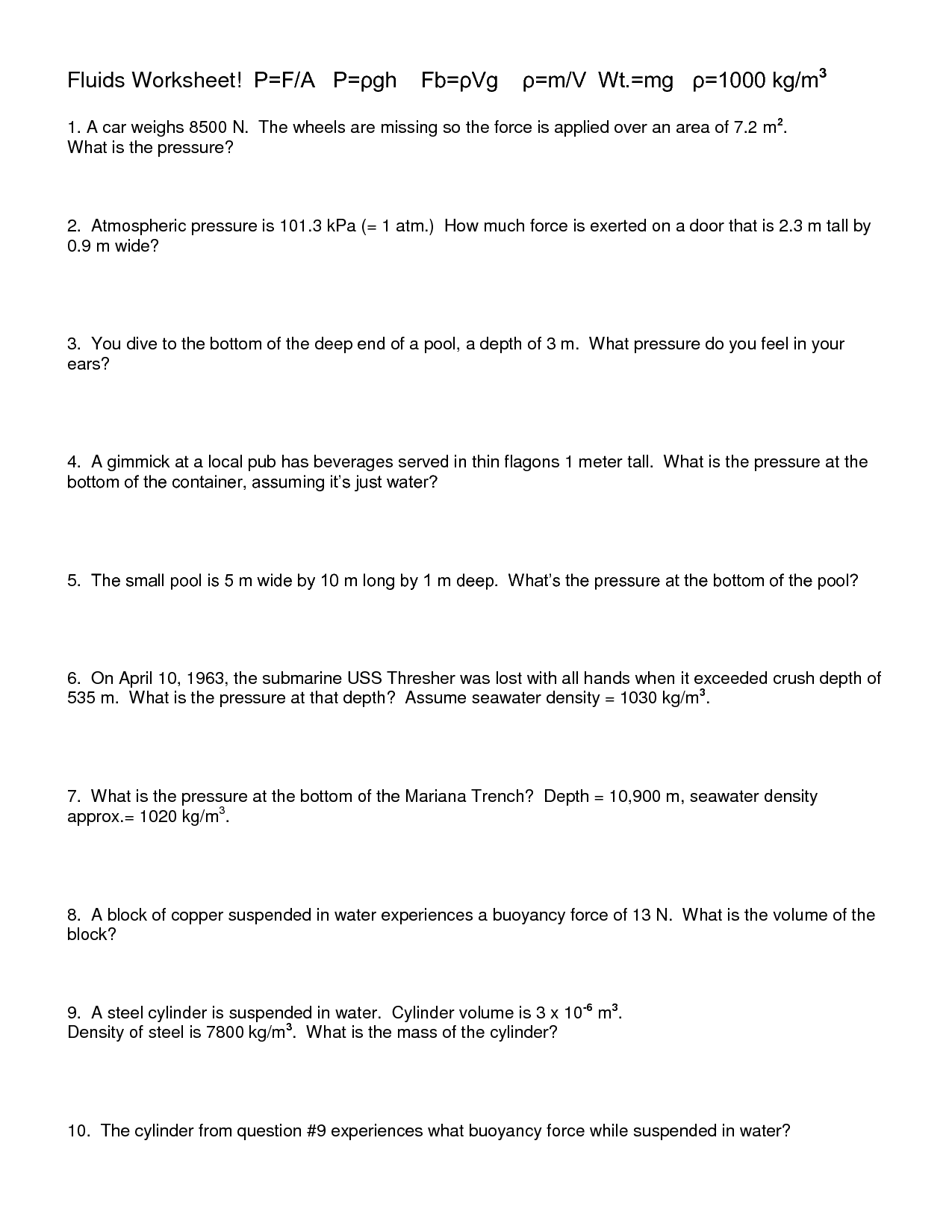
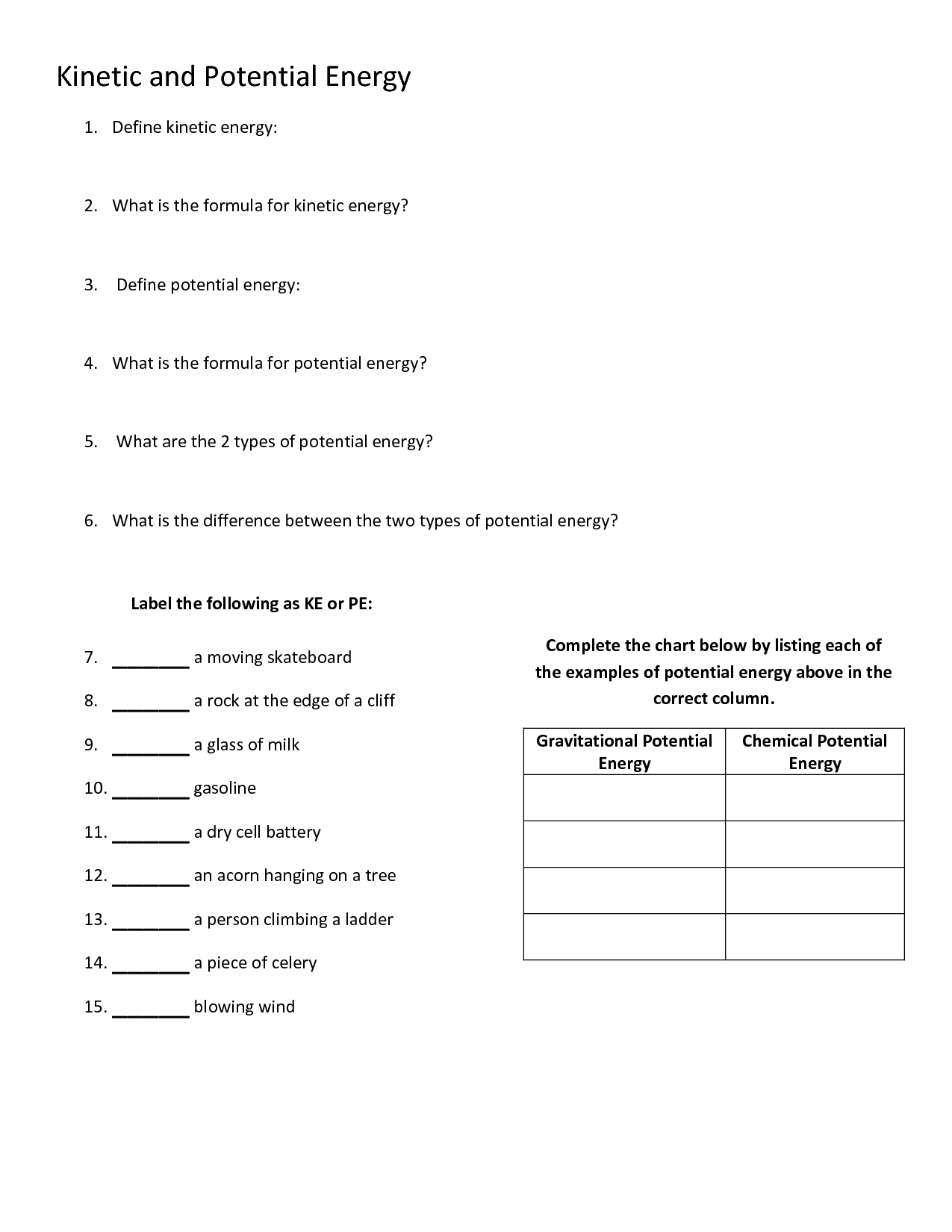
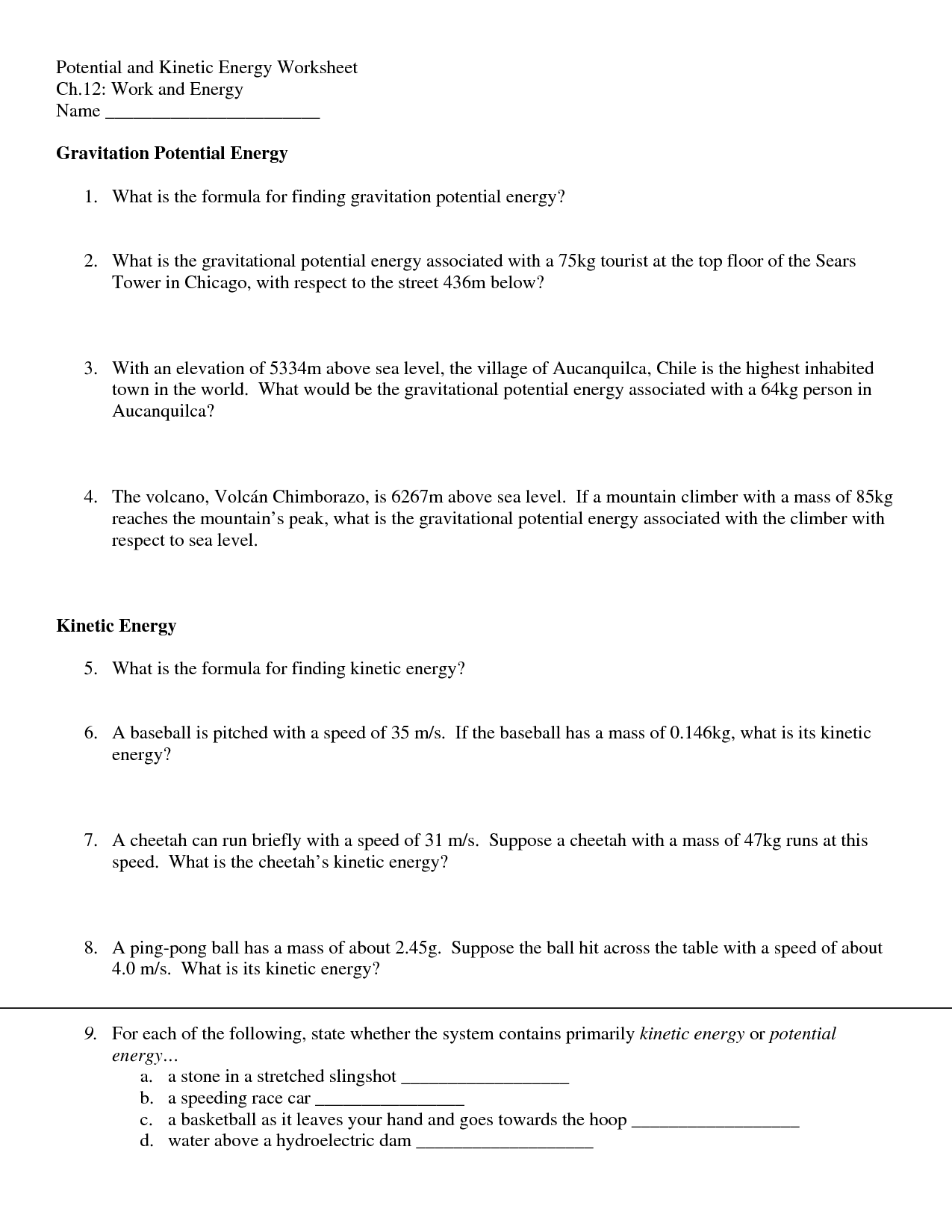
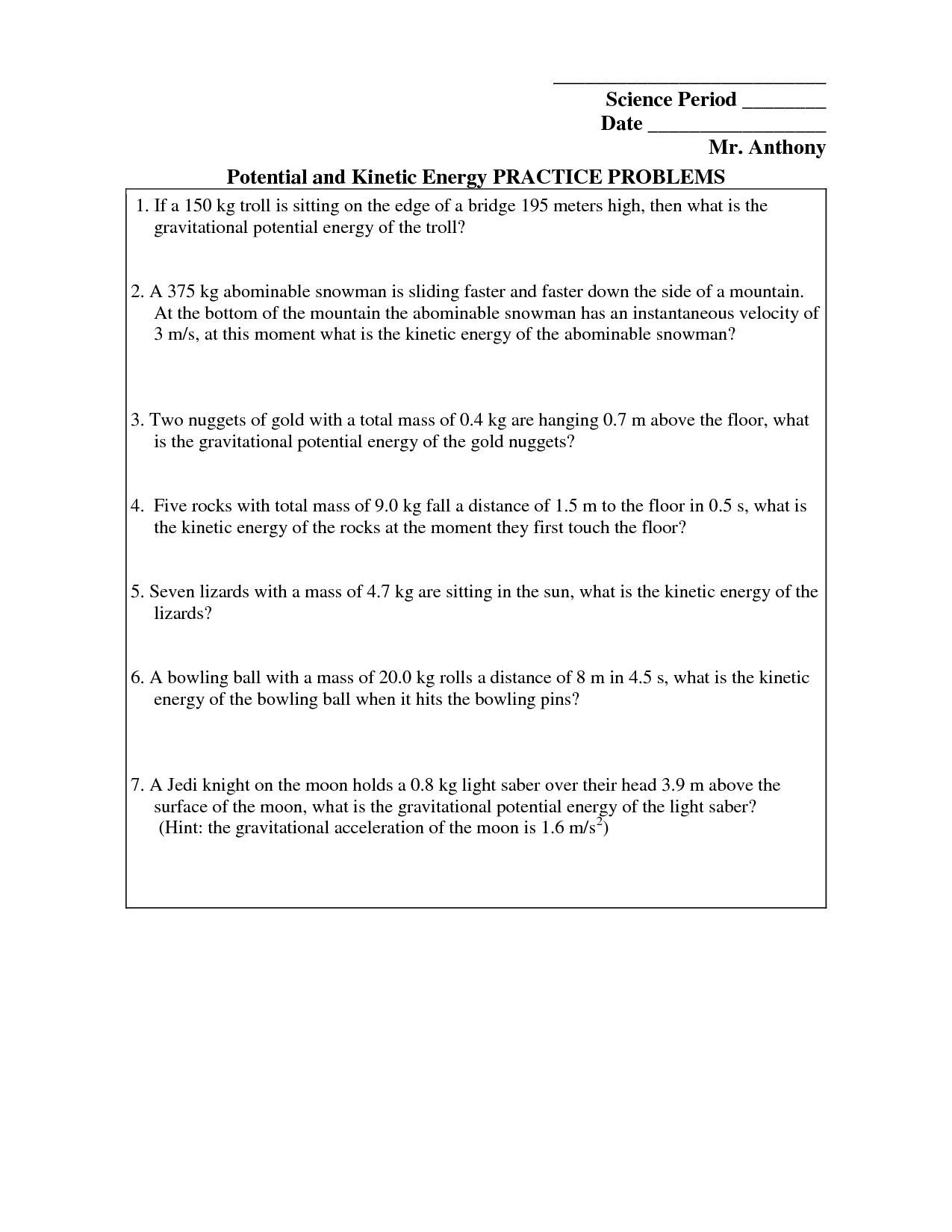

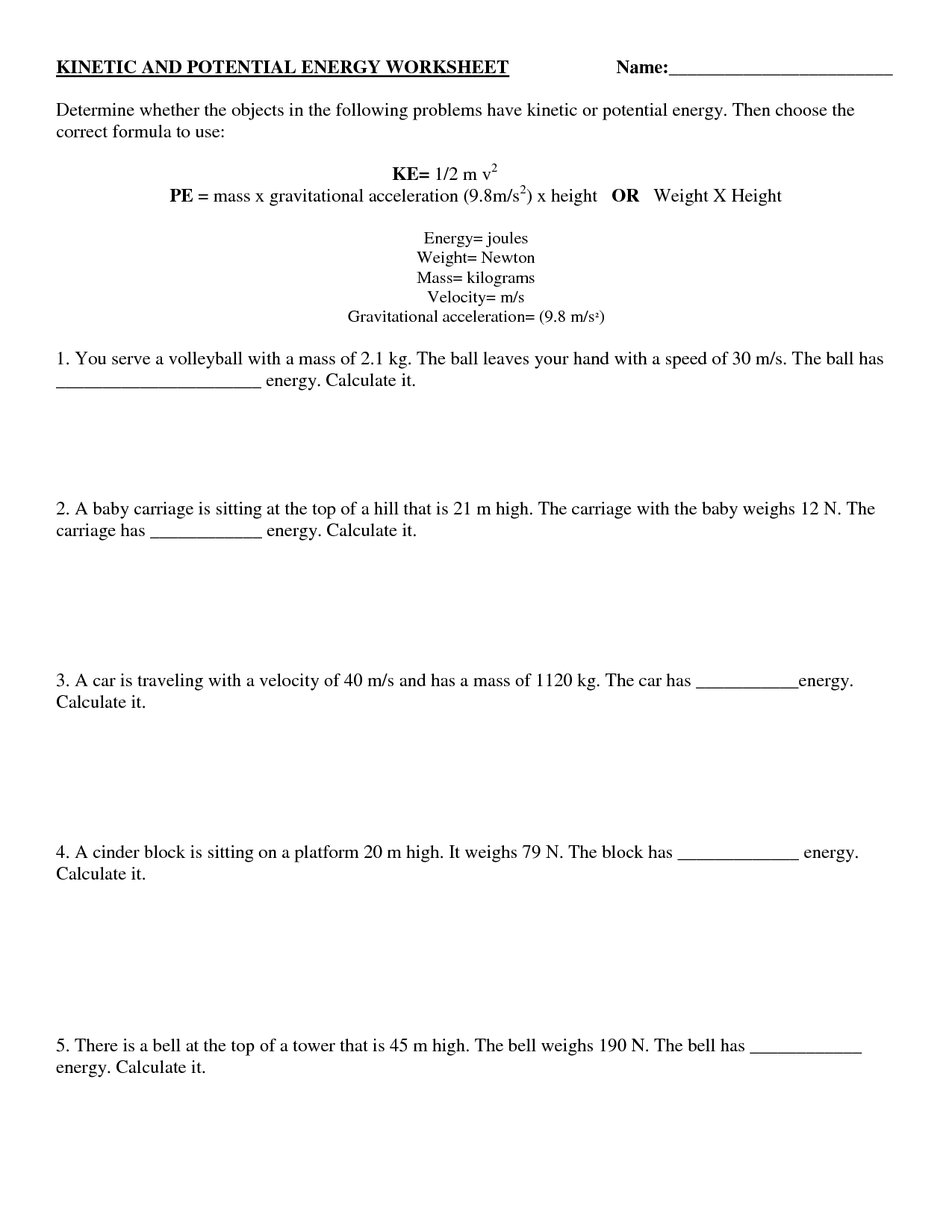
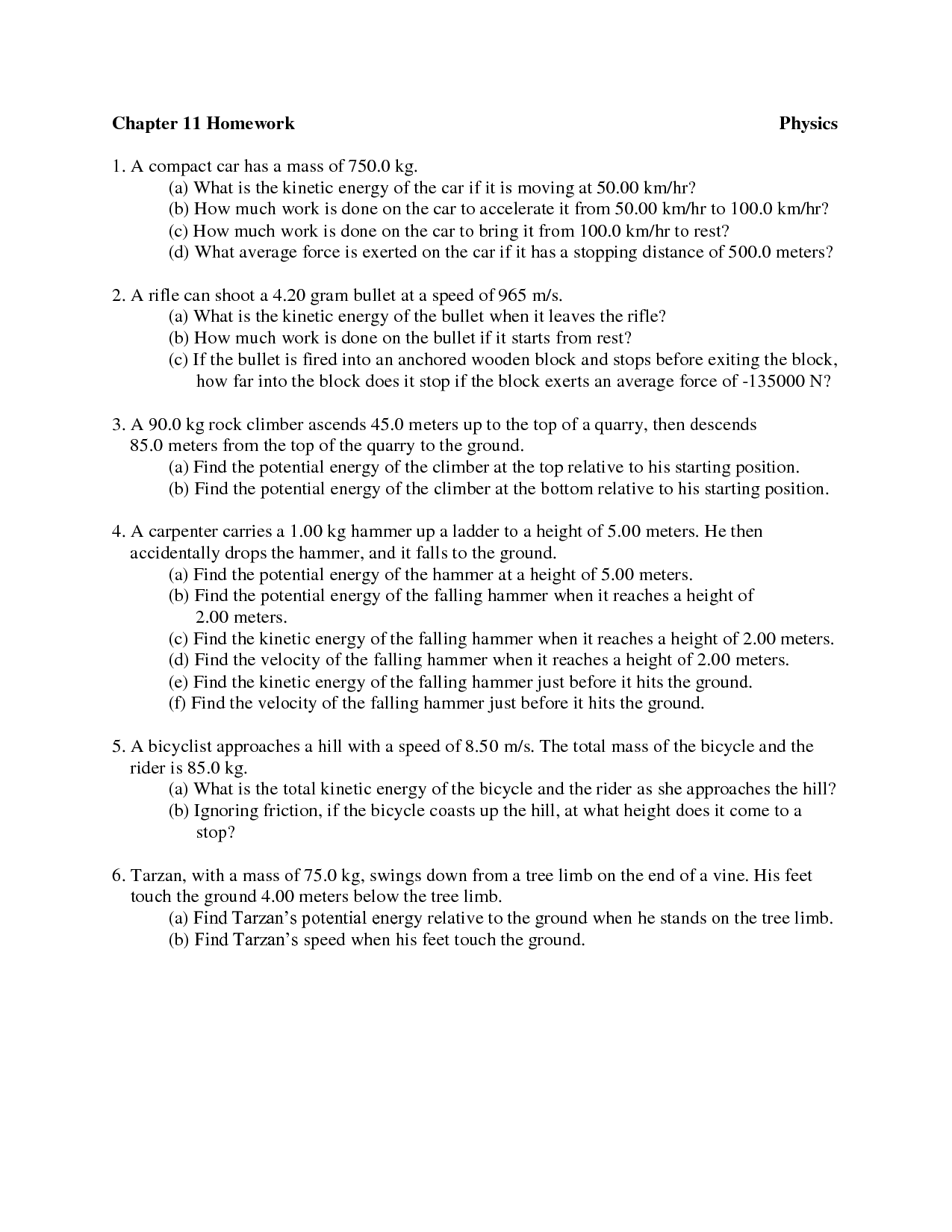
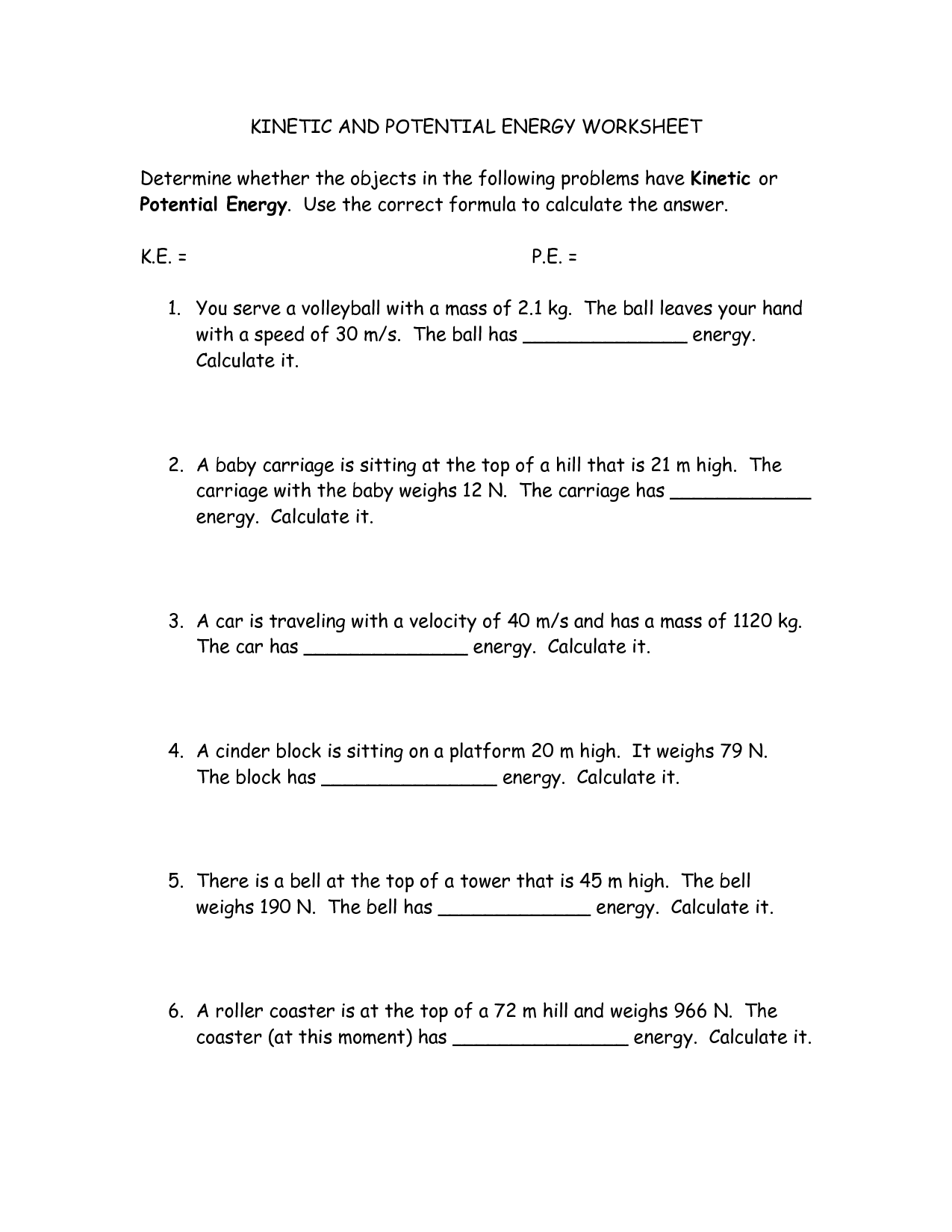

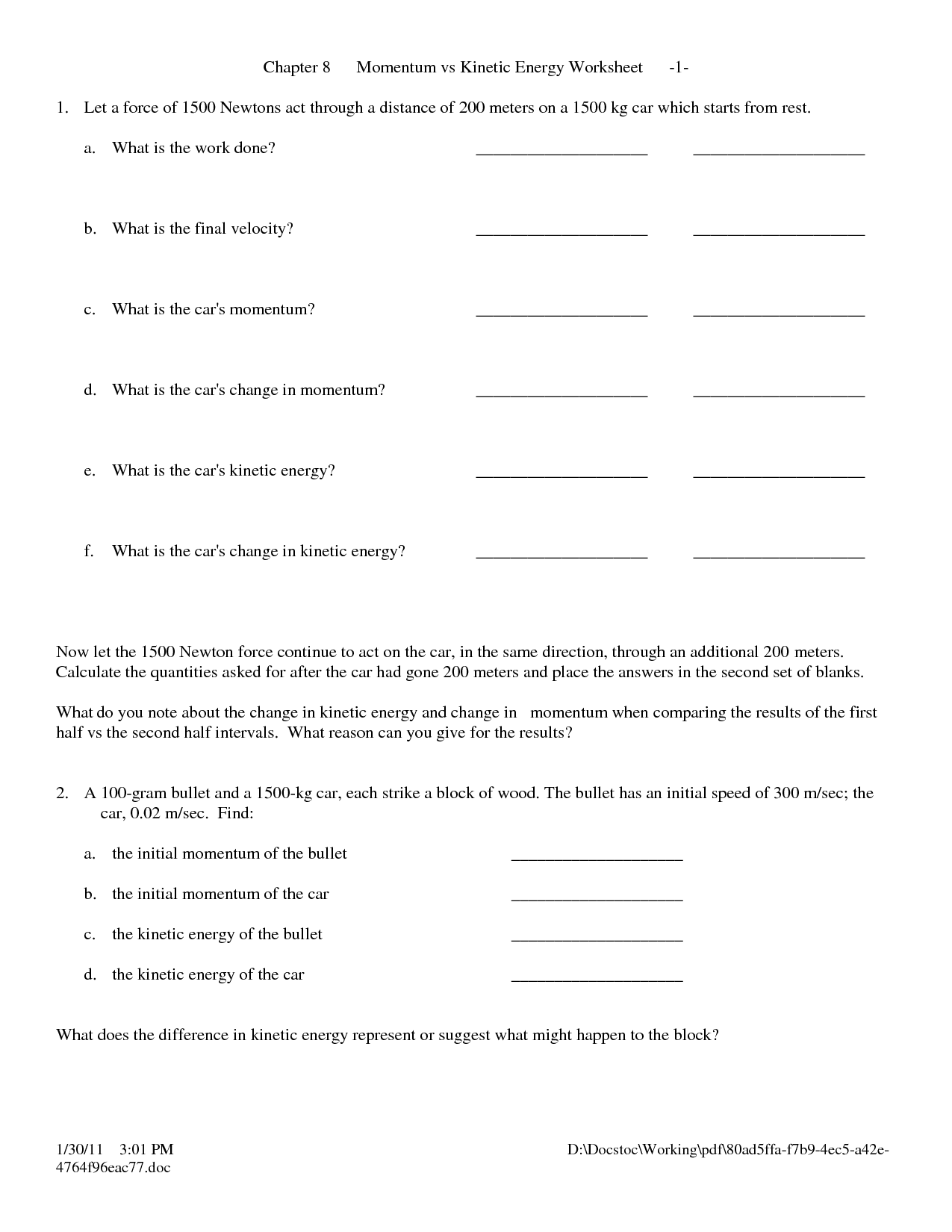
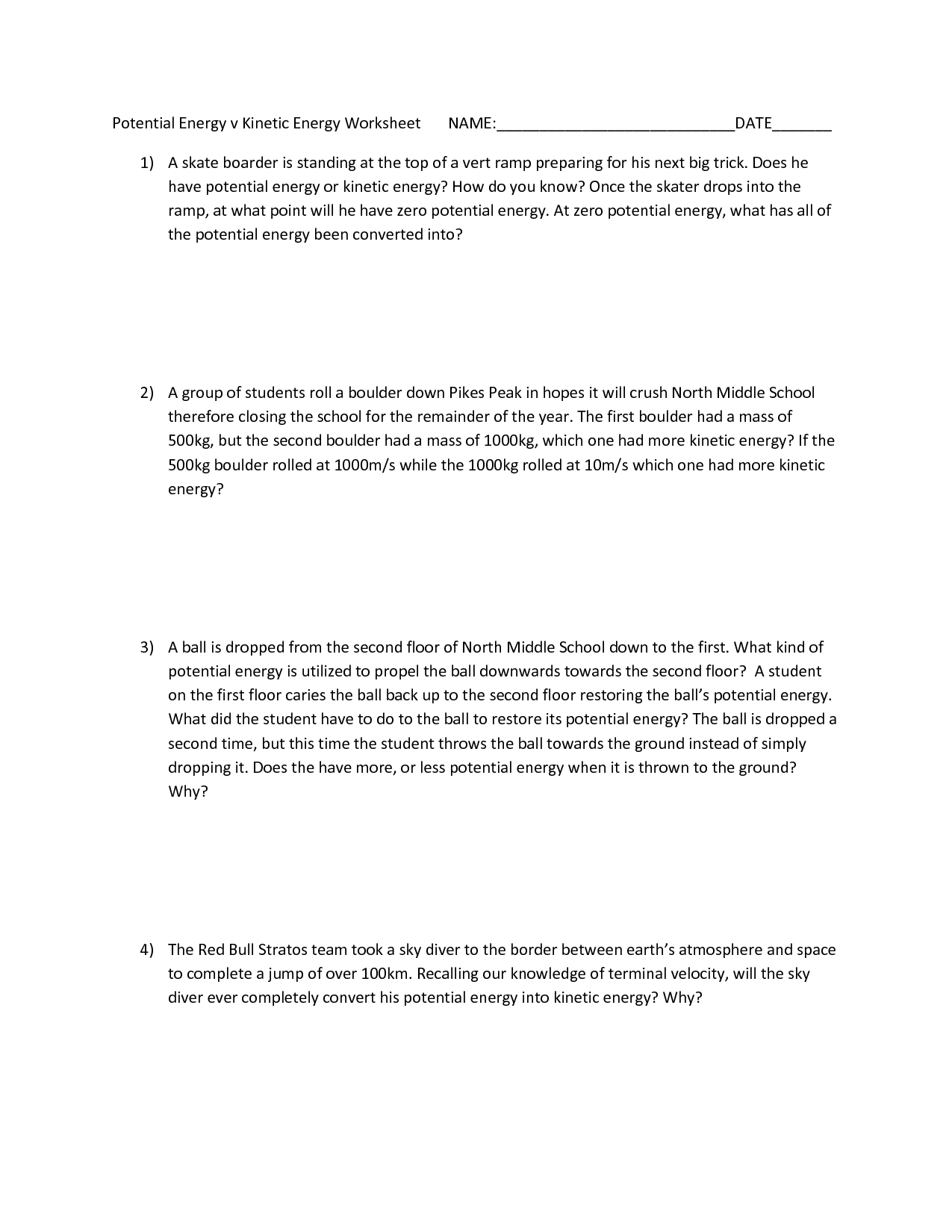
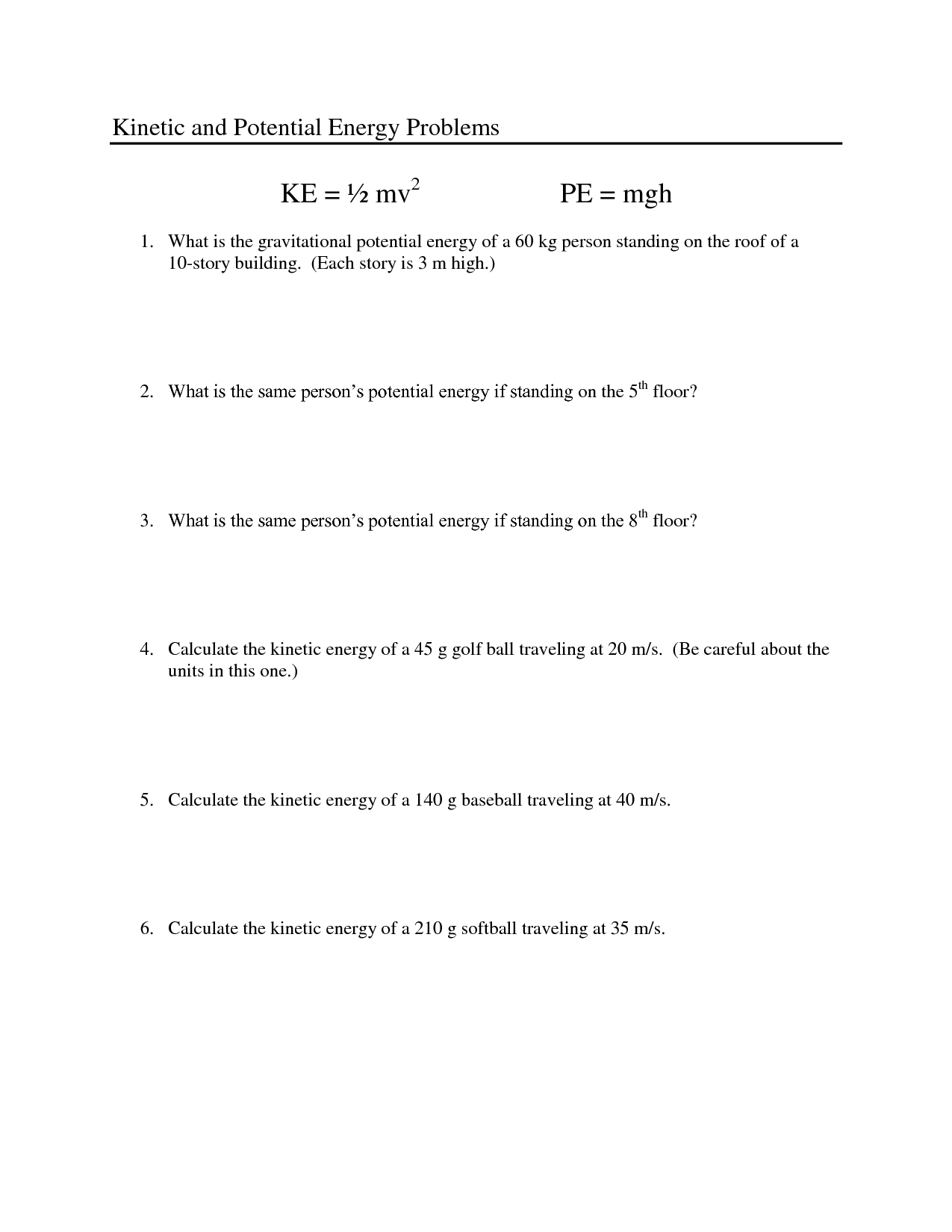













Comments